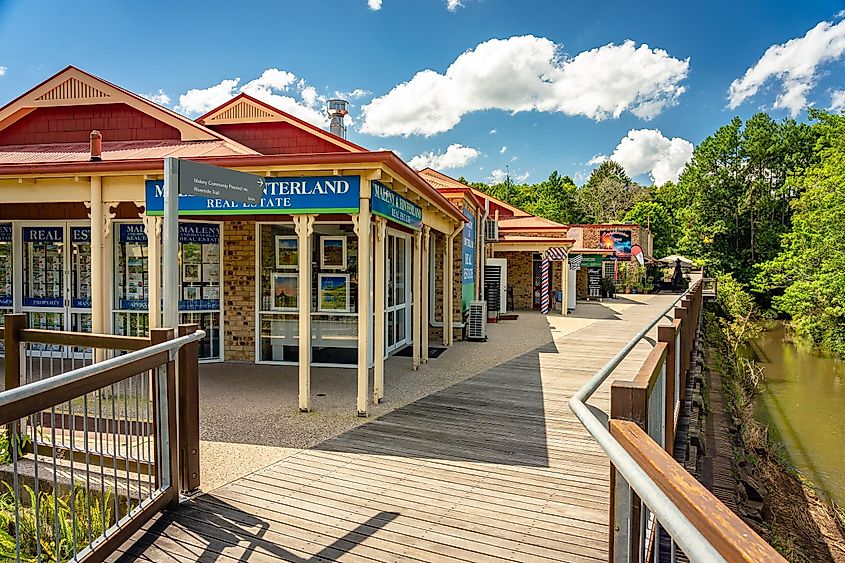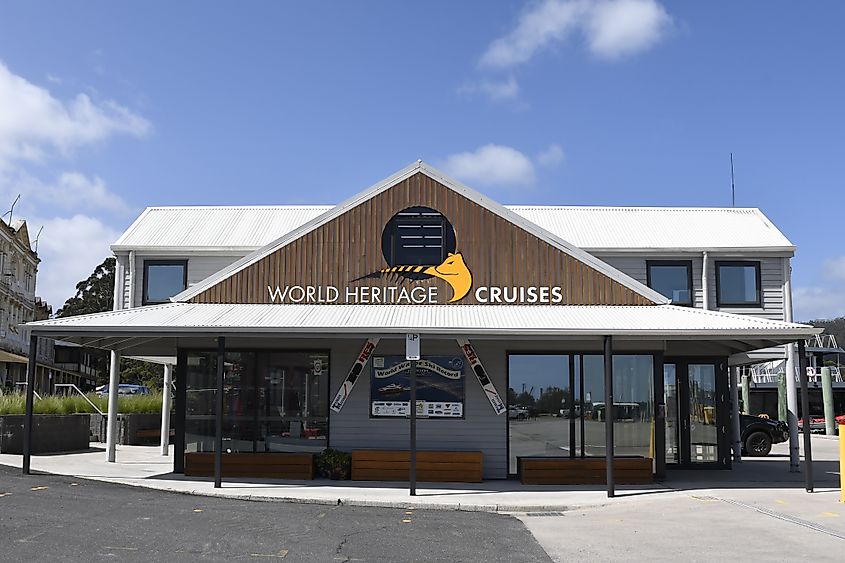There’s something magical about walking down a well-preserved main street that instantly transports you to another era. Australia’s small towns are home to some of the world’s most captivating thoroughfares, where every cobblestone and heritage building tells a story of resilience, community spirit, and cultural evolution.
From the gold rush boom towns of Victoria to the coastal gems of Tasmania, these remarkable main streets serve as living museums, bustling marketplaces, and social hubs all rolled into one. They’re the beating heart of their communities, where locals gather for morning coffee, tourists discover hidden treasures, and history comes alive with every step.

The Art of Preserving Australia’s Heritage Streets
What Makes a Main Street Unforgettable?
The most memorable main streets share certain characteristics that set them apart from generic commercial strips. Architectural integrity plays a crucial role, with many featuring stunning examples of Victorian, Edwardian, and Colonial-era buildings that have been lovingly maintained over decades.
Community engagement is equally important. These streets aren’t just pretty facades; they’re functioning parts of vibrant communities. Local businesses, from century-old bakeries to contemporary art galleries, create an authentic atmosphere that can’t be replicated in modern shopping centers.
Natural settings often enhance the appeal. Whether it’s tree-lined avenues providing dappled shade, mountain backdrops creating dramatic vistas, or coastal proximity adding maritime charm, the surrounding landscape significantly impacts the overall experience.
Regional Variations Across Australia
Victorian Gold Rush Towns
Victoria’s historic towns showcase the wealth and optimism of Australia’s gold rush era. Streets lined with ornate red-brick buildings reflect the prosperity of the 1850s and 1860s, when fortunes were made overnight and entire communities sprang up around mining operations.
Beechworth’s Ford Street exemplifies this heritage, with its carefully preserved buildings housing everything from legendary bakeries to museums dedicated to notorious outlaws. The town’s position in the Victorian Alps adds natural beauty to its historical significance.

Tasmania’s Maritime Heritage
Tasmania’s main streets often reflect the island’s maritime history and colonial past. Devonport’s Rooke Street showcases Federation-era architecture while encouraging street performances in its pedestrian precinct, creating a lively cultural atmosphere.
The island’s relative isolation has helped preserve these streetscapes, making them feel like time capsules where visitors can experience Australia’s early European settlement period.
South Australia’s Wine Country
South Australia’s small towns benefit from their proximity to world-renowned wine regions. Tanunda’s Murray Street in the Barossa Valley maintains its village charm while serving as a gateway to some of Australia’s finest vineyards.
These streets often feature German-influenced architecture, reflecting the region’s settlement history and adding European flair to the Australian landscape.

Notable Examples of Australia’s Best Main Streets
In the heart of the Port Macquarie Marina, Dockside Restaurant and Bar
Where the beauty of the waterfront meets delicious, freshly prepared cuisine. Nestled right by the shore, Dockside Restaurant offers a unique dining experience that combines the best of local flavors with a stunning view.
Berry’s Queen Street, New South Wales
Often called the “Town of Trees,” Berry’s main thoroughfare perfectly balances rural charm with sophisticated offerings. The street’s tree-lined sections provide natural air conditioning during hot summer days, while historic buildings house boutique shops, antique stores, and acclaimed restaurants.
Key Features:
- Tree-lined pedestrian areas
- Historic museum in former bank building
- Award-winning bakeries and cafes
- Regular farmers markets and festivals
Albany’s Stirling Terrace, Western Australia
As Western Australia’s oldest European settlement, Albany’s main street carries significant historical weight. Buildings from the 1800s, including the Old Post Office and Albany Courthouse, create an impressive streetscape that serves as the backdrop for major community events.
The street’s proximity to Torndirrup National Park adds natural attractions like The Gap and Natural Bridge rock formations to the urban experience.
Mudgee’s Church Street, New South Wales
This historic wine town’s main street beautifully blends colonial architecture with contemporary lifestyle offerings. The southern end features specialized food producers, while the town center buzzes with galleries, boutiques, and cafes showcasing local creativity.
Specification Table: Australia’s Premier Main Streets
| Town | State | Main Street | Key Period | Primary Attractions | Best Season |
|---|---|---|---|---|---|
| Beechworth | VIC | Ford Street | 1850s Gold Rush | Historic Bakery, Court House | Spring/Autumn |
| Berry | NSW | Queen Street | Colonial Era | Tree-lined shops, Museum | Year-round |
| Albany | WA | Stirling Terrace | 1800s Settlement | Heritage buildings, National Park | September-November |
| Tanunda | SA | Murray Street | 1840s German Settlement | Wine galleries, Festivals | Autumn/Spring |
| Devonport | TAS | Rooke Street | Federation Era | Performance precinct, Maritime Centre | Summer |
| Mudgee | NSW | Church Street | 1850s Gold Rush | Honey producers, Art galleries | Autumn |
Planning Your Main Street Adventures
Best Times to Visit
Spring and autumn offer the most comfortable weather for exploring these streets on foot. Many towns schedule their major festivals during these seasons, adding extra cultural activities to your visit.
Summer can be hot in inland areas but is perfect for coastal towns. Winter might be cooler but often provides clearer mountain views and fewer crowds.
What to Look For
Architectural details tell fascinating stories. Look for date stones, decorative ironwork, and construction techniques that reflect different historical periods and cultural influences.
Local businesses often have deep community roots. Family-run establishments that have operated for generations provide authentic experiences and insider knowledge about local history.
Community gathering spaces like town squares, memorial parks, and markets reveal how these streets continue to serve their communities beyond tourism.
Preserving Australia’s Street Heritage
Conservation Challenges
Maintaining historic streetscapes requires ongoing investment and community commitment. Building preservation must balance historical authenticity with modern safety and accessibility requirements.
Economic sustainability depends on attracting visitors while serving local needs. The most successful main streets manage to be both tourist destinations and functioning community centers.
Future Prospects
Australia’s heritage main streets face both opportunities and challenges. Increased domestic tourism, partly driven by travel restrictions, has brought new appreciation for these local treasures. However, urban development pressures and climate change impacts require careful management to preserve these irreplaceable cultural assets.
Community involvement remains crucial. Towns with active historical societies, engaged local councils, and supportive business communities tend to maintain their main streets most successfully.
Visitor Behavior Guidelines
| Do | Don’t |
|---|---|
| Support local businesses | Rush through without engaging |
| Respect heritage buildings | Touch or climb on monuments |
| Take photos respectfully | Block business entrances |
| Join community events | Ignore local customs |
| Ask about local history | Assume modern conveniences everywhere |
Australia’s Main Streets
These remarkable thoroughfares represent more than just tourist attractions; they’re living testimonies to Australia’s diverse cultural heritage. Each street reflects the dreams, struggles, and achievements of the communities that built and maintained them across generations.
Whether you’re drawn to gold rush history, maritime heritage, wine culture, or simply the pleasure of strolling through beautifully preserved townscapes, Australia’s main streets offer experiences that connect us to our shared past while supporting vibrant contemporary communities.
From the Victorian Alps to Tasmania’s coast, from wine valleys to historic ports, these streets continue to evolve while honoring their heritage, ensuring future generations can experience the magic of Australia’s most unforgettable main streets.
Frequently Asked Questions
Q: What’s the best time of year to visit Australian heritage main streets?
A: Spring (September-November) and autumn (March-May) offer comfortable walking weather and fewer crowds, with many towns hosting festivals during these seasons.
Q: Are these main streets accessible for mobility-impaired visitors?
A: Most towns have made efforts to improve accessibility, though heritage buildings may have limitations. Contact local visitor centers for specific accessibility information.
Q: Can you drive along these main streets or are they pedestrian-only?
A: Most allow vehicle access, though some have pedestrian sections or seasonal restrictions during festivals and markets.
